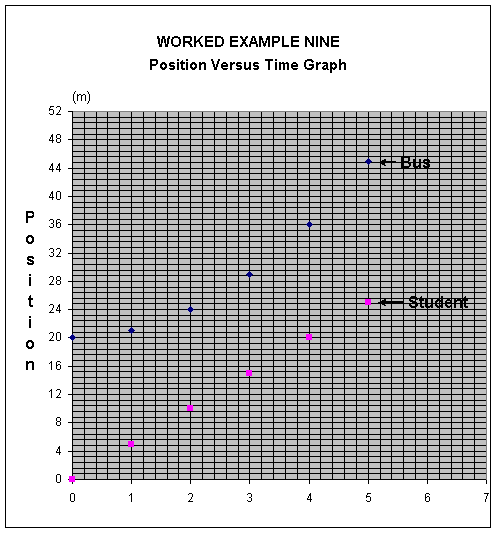

- #Unit 3 stacks of kinematics curves how to#
- #Unit 3 stacks of kinematics curves pro#
- #Unit 3 stacks of kinematics curves software#
- #Unit 3 stacks of kinematics curves free#
Scenario #1: Constant velocity car in motion. (Group that was successful last time received Scenario 3 – two accelerating objects) I love idea of using practicum at end of unit ! They tie the model together to solve realistic problems in a super fun way!
#Unit 3 stacks of kinematics curves free#
Once an agreement was made on the dots, velocity arrows were added.ĭuring discussion v-t and a-t graphs were made.ġ) Clear up confusion of motion map (which dots get arrows, how long should arrows be at various dots, etc.) At each dot, the instantaneous velocity at that moment should be represented.Ģ) Reinforce relationship between displacement, velocity and acceleration in free fall. The class had been struggling with motion maps. Quantitative Motion Map for a Tossed Ball I realized how all multiple representations (graphs, equations) can be used to solve problems.ġ) Connect graphs to equations and vice versa.Ģ) Multiple methods arrive at same answer :) As Laura stated day 1 (be patient)… I finally saw the benefit of modeling. This was my first ah ha moment in modeling. I wrote a separate blog about this activity. ish.Ħ) We were reminded that ideas can be planted in small group discussion to bring to large groups in order to “steer the bus”ġ) Reinforce relationship x-t, v-t and a-t graphs & equations.Ģ) Similarity in data between groups with hopes to arrive at a= -10. Data limitations (does it make sense?)ĥ) At the end conclusion was acceleration of free fall was -10 …. There was some discussion on reference points (0meter) and direction of + vs – that accounted for changes in x-t graphs. I may have missed some key pieces of the discussion.

I would like to try these techniques Ĥ) I was in an “outer circle” taking notes about facilitator in this discussion. One group used a Vernier app and one group used slow motion camera from an I phone (each pic is 1/10th of a second) – they taped a meter stick to wall and zoomed in.

#Unit 3 stacks of kinematics curves pro#
(split up group to join others)ģ) Other groups used vernier (Logger pro and were successful).
#Unit 3 stacks of kinematics curves how to#
This was a good experience as how to handle this in a classroom setting.
#Unit 3 stacks of kinematics curves software#
This was interesting.Ģ) Our group had issues with collection software (vernier motion detectors and software). Part 2: Toss up – generate x-t, v-t and a-t graphsġ) Each group used different collection methods. Part 1: Drop Ball – generate x-t, v-t and a-t graphs It may be possible to complete this worksheet as group whiteboards instead of worksheet (add motion map and or picture ?).ġ) Solidify relationship x-t, v-t and a-t graphs.Ģ) Explore more difficult x-t, v-t and a-t graphs (change in motion)Ĥ) Another opportunity to discuss direction of motion, direction of acceleration and speed up vs. Learning objectives for worksheets ramp and rollġ) High cognitive demand activity that requires student analyze motion that is represented by x-t, v-t and a-t graphs. We needed to adjust the pillar heights for the ramp in order to generate the x-t, v-t and a-t curves on the handout. In this activity, we were given graphs (handout – not in binder). Ramp and Roll Computer Simulation (note: did not work with my school laptop… would need IT help) Note: Number 2 on worksheet 3 could be done separately as a whiteboard group activity/ discussion (this problem addresses some preconceptions/ common errors) Introduce instantaneous velocity (worksheet 3) Unit 3 Worksheet 2 & 3 (not usually done together)ġ) Solidify relationships between x-t, v-t and a-t graphs.Ģ) Model development – connection between graphs and equationsģ) Using data to develop graphs (rather than graphs to data) Learning objectives for graph comparison:ġ) Explore relationship between various x-t, v-t, and a-t graphs.Ģ) Address preconception – deceleration is not a term used in physics.ģ) Early concept development for direction of motion, direction of acceleration and speed up vs. Learning objectives for Buggy on Ramp lab:ġ) Discover x-t and v-t relationships for constant acceleration.Ĭompare Constant Velocity and Constant Acceleration Graph (Area under v-t graph) Be sure to discuss that t=Δt when displacement. Compared data on board (a and vo from x-t and v-t) to developed two kinematic equations Developed x-t (quadratic) & v-t graphs (linear) Used metronome to mark behind buggy in regular intervals. In my summary of unit 3, I am attempting to connect learning objectives/ instructional goals with the activities that were completed for the constant acceleration model.


 0 kommentar(er)
0 kommentar(er)
